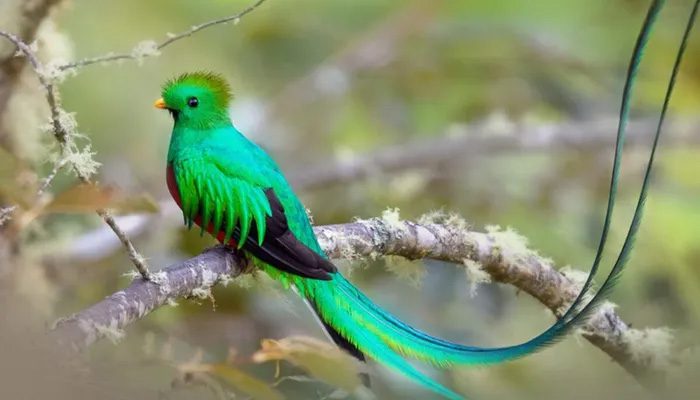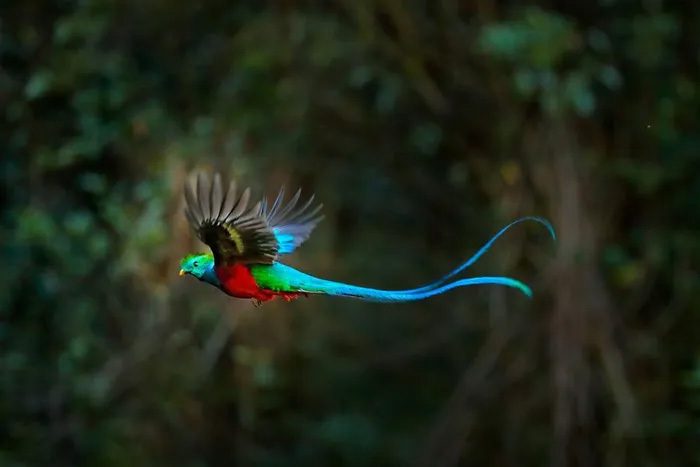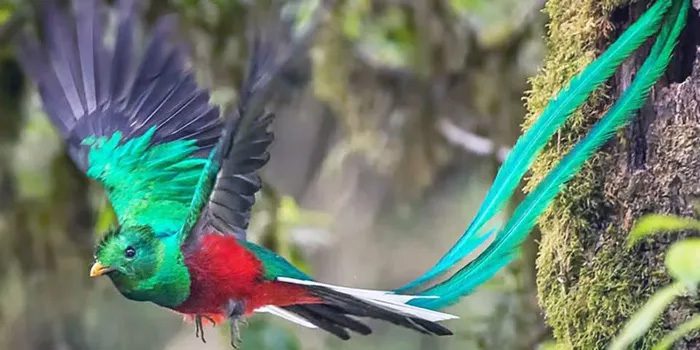The Resplendent Quetzal is one of the most beautiful and rare birds in the world.
This bird boasts a stunning emerald green plumage with a deep red breast. Its tail feathers are twice the length of its body, and combined with its vibrant colors, it’s easy to see why it has been regarded by ancient peoples as a bird of “extraordinary beauty.”



The Quetzal bird is considered a sacred symbol to the Maya and Aztec.
The Quetzal is an omnivorous bird, feeding on a wide variety of items including fruits, berries, insects, lizards, frogs, and any small animals it can catch. According to the American Bird Conservancy, its favorite food is small wild avocados, which it swallows whole before regurgitating the pit after consuming the flesh.
Notably, for the Maya and Aztec, the Quetzal is considered a sacred symbol. It is believed to represent the divine, which is why the people were forbidden from killing them.
The ruling classes of the Aztec and Maya often captured male Quetzals for their tail feathers to make ceremonial headdresses, only to release them afterward.
The feathers that were shed or plucked became a valuable form of currency, which is why the Quetzal gave its name to the currency of Guatemala starting in 1925.
Quetzals inhabit cloud forests from southern Mexico to western Panama. Many people visit these areas in hopes of catching a glimpse of this exquisite bird.
However, Quetzal enthusiasts cannot capture and cage them for daily viewing. This is because these birds highly value their freedom. They would rather starve to death than be imprisoned in gilded cages. Thus, the Quetzal is also known as the “bird of freedom.”
The Quetzal belongs to the Trogonidae family, distinguished by its colorful plumage. They typically peck at soft wood or decayed trees to create nest cavities.
Due to deforestation, illegal hunting, and the impacts of climate change, the Quetzal population has significantly declined. The International Union for Conservation of Nature (IUCN) lists the current population of this precious bird at approximately 50,000 individuals, categorizing it as “near threatened.”


















































